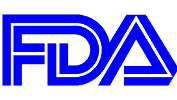
FDA Launches New Center for Tobacco Products
The Food and Drug Administration has launched its new Center for Tobacco Products in an effort to curb the hundreds of thousands of deaths caused by those products each year.
The center will oversee the implementation of the Family Smoking Prevention and Tobacco Control Act signed by President Obama in June 2009. FDA's responsibilities under the law include setting performance standards, reviewing premarket applications for new and modified risk tobacco products, and establishing and enforcing advertising and promotion restrictions.
Lawrence Deyton, M.D., M.S.P.H., an expert on veterans' health issues, public health, tobacco use, and a clinical professor of medicine and health policy at George Washington University School of Medicine and Health Sciences, will serve as the center's first director.
"We are thrilled to announce Dr. Deyton's appointment as director of the Center for Tobacco Products and look forward to him joining the agency," said FDA Commissioner Margaret A. Hamburg, M.D. "He is the rare combination of public health expert, administrative leader, scientist, and clinician."
Before coming to the FDA, Deyton was Chief Public Health and Environmental Hazards Officer for the U.S. Department of Veterans Affairs. His responsibilities there included oversight of the VA's public health programs including tobacco use, the health of women veterans, the long-term health consequences of military service, and the VA's emergency preparation and response. He was selected after a national search.
FDA's Center for Tobacco Products, located on FDA's White Oak Campus in Silver Spring, Md., will use the best available science to guide the development and implementation of effective public health strategies to reduce the burden of illness and death caused by tobacco products.
To implement the program, FDA will start with $5 million from the fiscal year 2009 budget to establish the necessary administrative functions for the center. As set forth in the Family Smoking Prevention and Tobacco Control Act, funding for the center and other activities related to the regulation of tobacco will come from user fees paid by manufacturers and importers of tobacco products.
One of Deyton's priorities had been revitalization of the VA's smoking and tobacco use cessation programs. Under his leadership, current smoking among veterans enrolled in the cessation program fell from 33 percent in 1999 to 22 percent in 2007.
"I am eager for the challenge of leading the tobacco team at FDA," Deyton said. "This is a tremendous opportunity for us at FDA to work hand-in-hand with the CDC, researchers at the National Institutes of Health, and public health leaders in the states to make progress in combating tobacco use--the leading cause of preventable death in the United States."